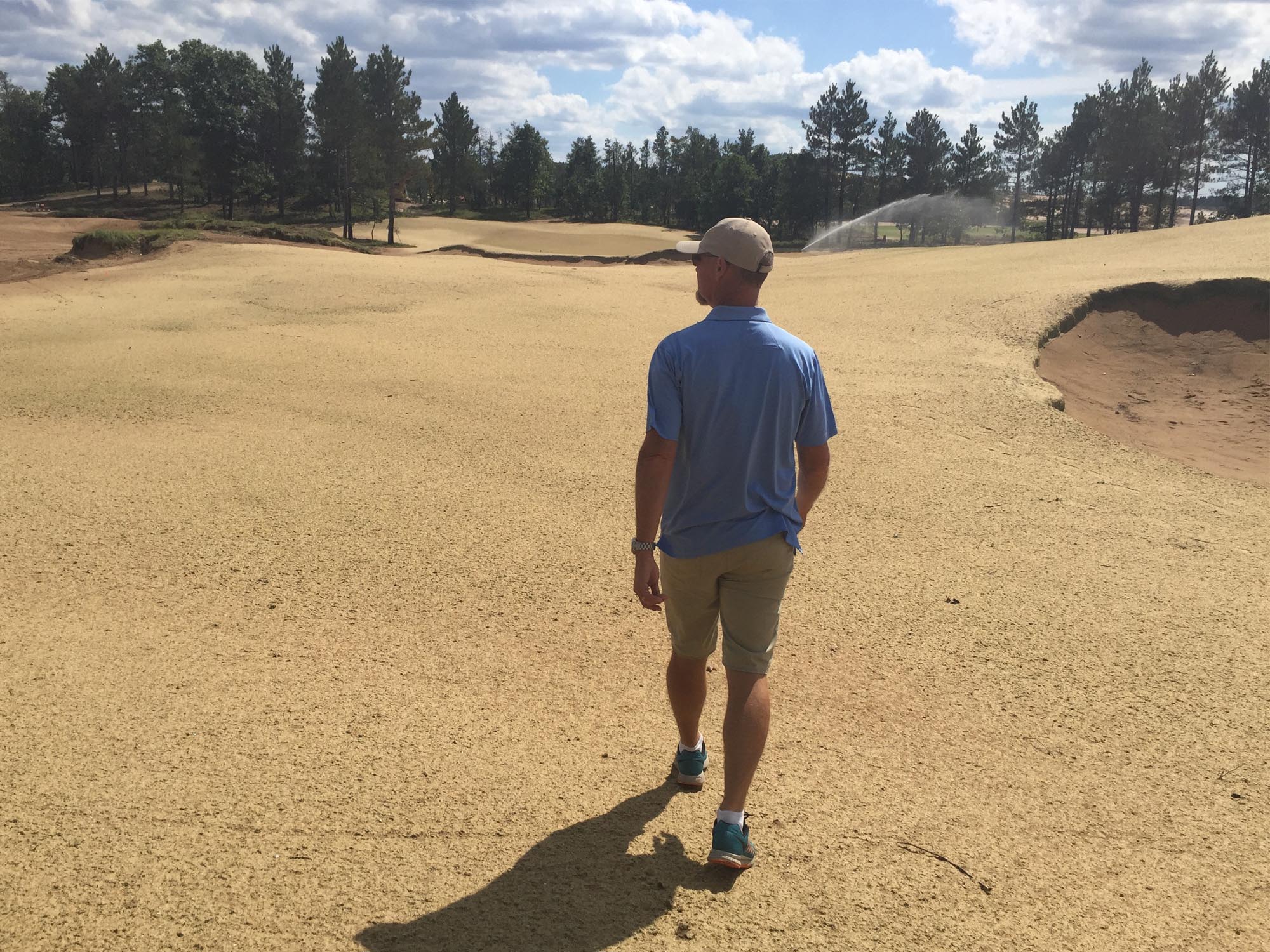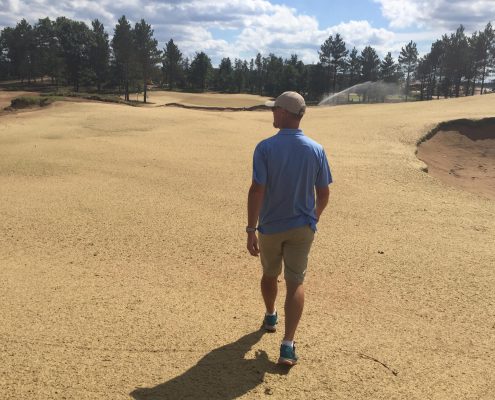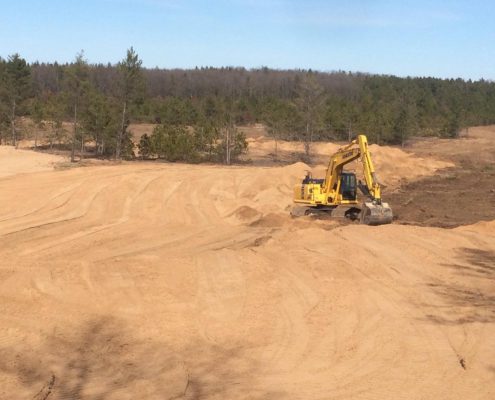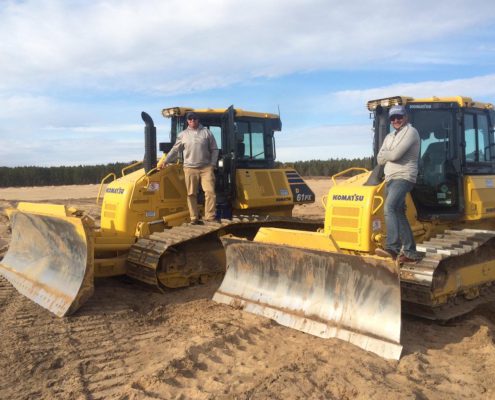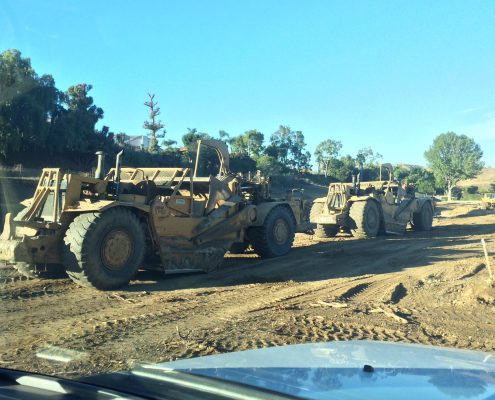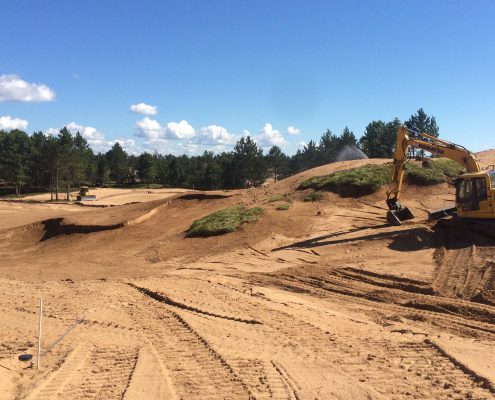Methodology
I steadfastly believe that a great golf course cannot be designed within the two-dimensional boundaries of a piece of paper or a computer screen. My team and I strive to discover golf courses more so than design them, to unearth them rather than impose ourselves upon them. It has been my experience that the best-laid plans in ink often go to waste in the dirt.
Our hands-on methods are more time consuming but ultimately more rewarding — for us, for our client, and for the golfer. This bespoke style of golf course design and construction has been a major key to our success.
We have developed a proven design process comprised of five stages:
1. Routing
The fundamental building block of an exceptional golf course is a well thought-out routing, as superior execution cannot make up for inferior strategy.
Our first step in the routing stage is information gathering: accurate topographic mapping, wetland delineation maps, geological surveys, analysis of the soils, vegetation, hydrology, etc. We then spend a good deal of time walking the site and learning the lay of the land so as to gain a full understanding of the design constraints and opportunities. We may consider a couple dozen different options before settling on what we believe is the optimal solution.
Whenever possible we prefer to stake the layout ourselves, take our own measurements with a laser rangefinder, and then have our stakes surveyed and the data transferred back to paper rather than vice-versa. Conventional methods often see the designer divine a routing on paper, which is then laid out on the ground.
Of course, we have never been accused of being conventional.
The routing of a golf course is like the soundtrack to a movie. It sets the tone for what should be a memorable exploration. It should flow seamlessly, captivate and intrigue and build to crescendos. The routing is often the unsung hero of an unforgettable golf course.
2. Scheme Design
If the Routing is the skeleton, the Schematic Design is the meat on the bones. This stage is pivotal because it establishes the style and character, the budget, and the construction parameters and program.
Here we conceptualise each hole on the golf course, much the way scenes in a movie are outlined in storyboards. We create individual sketches and notes for each hole that illustrate and detail our utilisation of the existing features, areas in need of modification, construction issues, maintenance requirements, golfing strategy, visual appeal, etc.
Using Computer Aided Design (CAD), we create Schematic Construction Drawings, which establish approximate requirements for items including topsoil, drainage, etc., after which we produce a Construction Specification that is tailored to suit the site, the course style, and the Superintendent’s necessities. This includes recommendations by our Agronomist as to the best and most suitable grasses, soil additives, etc. Based on this initial design work we compute a preliminary Bill of Quantities, which in turn we use to calculate a Preliminary Construction Budget.
This conceptual stage allows us to define the style of the golf course and identify the scope of the work required to build it so that our staff, the client, and other members of the project team are all on the proverbial same page.
A full-color masterplan rendered to scale is then created and presented to the client, along with a Sketchbook illustrating our thoughts on each hole. Not only is this useful for discussing concepts and adjustments prior to the creation of detailed construction plans, but our clients often find the Sketchbook incredibly helpful in the early stages of their marketing plans.
3. Detailed Design
Here we flesh out the meat on the bones of the skeleton. Our Scheme Design is expanded into Working Drawings for all matters relating to the construction of the golf course (excluding irrigation and civil engineering elements, such as structural concrete, retaining walls, storm drainage pipe sizing, etc.) If asked, we will draft a brief for an irrigation consultant/engineer citing requirements they may be required to design.
Our extensive use of CAD at this stage allows for a more accurate calculation of the Bills of Quantities and more detailed Construction Specification. Our plans are created at 1:1250 (1 inch = 100 feet) scale and include everything from clearance to topsoil management, bulk earthworks, cut & fill contours, grading, drainage, as well as numerous other construction components.
What we don’t do:
- We do not create individual tee or putting green grading plans because we wholeheartedly feel that these critically important features are best created by our team on the ground.
- We do not create construction plans on a scale in excess of 1:1250 (1 inch = 100 feet). This is key because it allows for flexibility in the shaping and detailing of the golf course. Beyond that scale I have found that the fine art of golf course design is best executed in the field in collaboration with our incredibly talented shapers, who possess the skill and the creativity to form intricate accents with subtle flair.
Depending on the needs of the project and the client we can tailor the detailed design package into a single set of bid/tender documents under various conventions both European and North American.
We can also provide additional construction management services; for example, we can breakdown the scope of the works into smaller pieces, which may be better suited to local non-golf contractors, and offer our own specialist expertise to undertake shaping and feature construction.
4. Construction
Whether we are strictly providing the course design or serving as the general contractor as part of a complete design & build package, I personally commit to spending a substantial amount of time on every project throughout process.
In addition, a Senior Design Associate is assigned to every project. This person is on site and involved in the day-to-day operation from beginning to end, and their role is communicate design intent and liaise with the client and the contractors.
I like to say that our success is 10% inspiration and 90% perspiration. There are no shortcuts, only commitment and hard work.
5. Grow-in
As the proud son of a greenkeeper, I am particularly aware of and sensitive to the wants and needs of the course superintendent. We take great pride in having one of golf’s foremost turf managers on board, my father, Jimmy Kidd, who spent over a quarter century as Director of Golf & Estate Operations at the Gleneagles Resort in Scotland. His experience and insights are an invaluable asset to every DMK project.
During this period, my team and I coordinate with the Superintendent to achieve technical success in the establishment of good turf, identify mowing patterns to suit maintenance practices, aesthetics, and playability, and also to create the overall look and style of the original design concept. Working with the greenkeeping staff, we can help establish maintenance regimes that affect — and ultimately enhance — the course design, such as bunker presentation, mowing patterns, rough establishment, and so on.
This close working relationship is mutually beneficial, as not only does it help assure our team that the integrity of the course design will be maintained, but it also creates an added measure of enthusiasm and ownership for the Superintendent and the greenkeeping staff.


